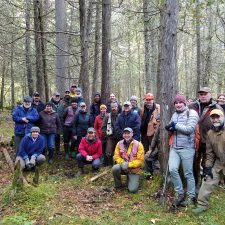
Northern White-Cedar: Management Decisions and Silviculture of Lowland Sites
- Kenefic, Laura
U.S. Forest Service, Northern Research Station
laura.kenefic@usda.gov
This presentation was given at a workshop sponsored by the Forest Guild and Vermont Land Trust in Greenboro, Vermont on October 4, 2019. It addresses the following topics related to northern white-cedar (Thuja occidentalis): trends and sustainability; conservation and old-growth; stand dynamics including tree growth, site influences, and decay; and ecology and management of lowland stands. Some of the work presented is from ongoing research not yet available in the published literature. Key findings are that because the amount of northern white-cedar is declining in some locales (due in part to post-harvest species shifts and/or excessive browsing by white-tailed deer), greater attention to regeneration requirements and growth potential of this species is needed. Furthermore, because old-growth northern white-cedar forest is rare, stands with old-growth structure and no evidence of past harvesting have high conservation value. Stands with structures typical of old growth but a history of harvesting might be perpetuated by ecological forestry. In stands where harvesting is appropriate, attention to mode of regeneration, presence of advance regeneration and competing species, and retention of overstory trees is important. Research in progress with commercial forestland owners and managers is investigating harvesting of lowlands, for which management guidance was previously lacking. Early results are promising regarding feasibility of operations, but stand growth response and composition have yet to be determined.

You must be logged in to post a comment.